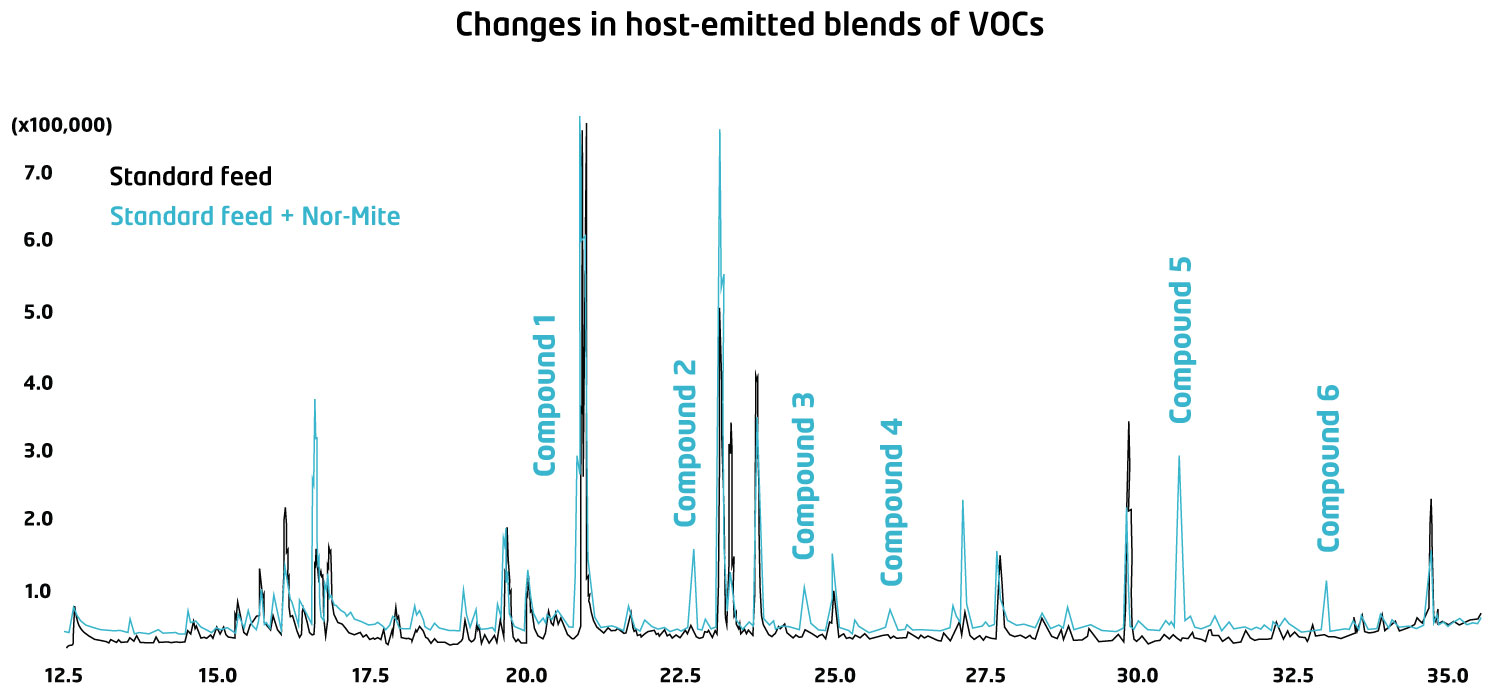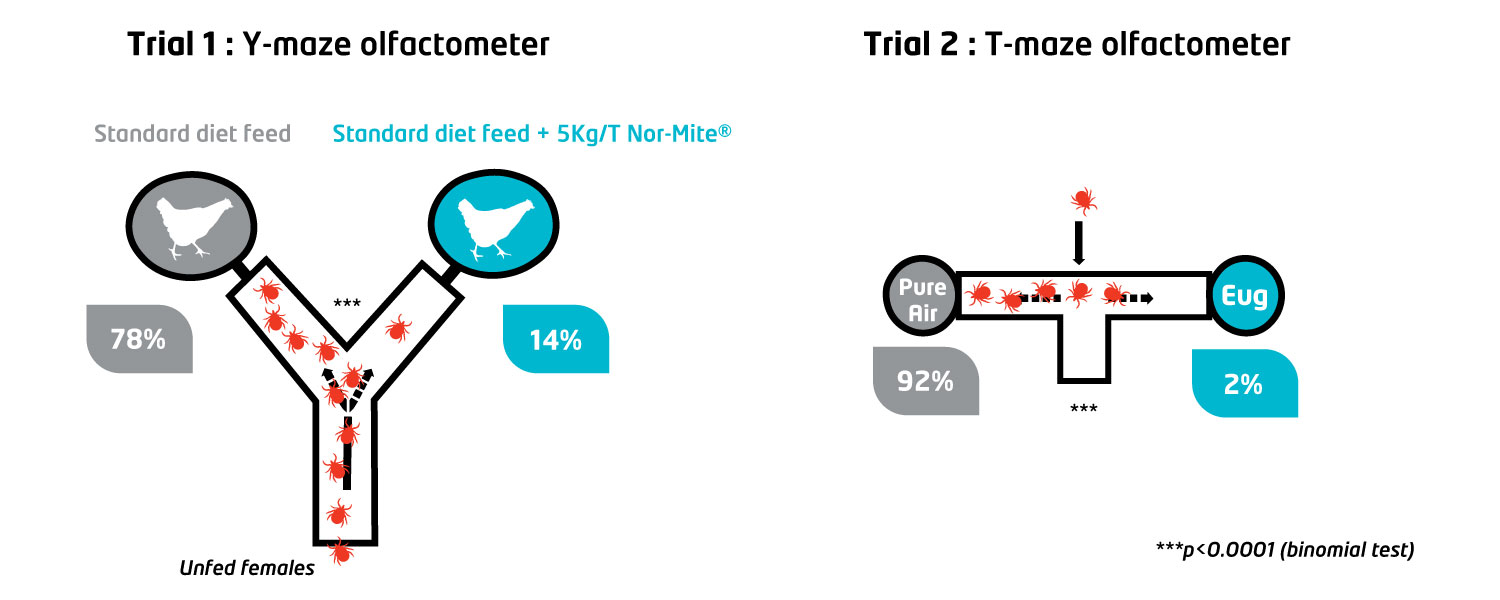Poultry red mite (PRM) is a hematophagous ectoparasite that causes consequent economic losses in poultry industry. The presence of this pest in poultry farms makes both direct and indirect damages such as: bird stress, anemia, decrease in yield, downgraded eggs, and transmission of pathogenic microorganisms. PRM does not live directly on the hens but in the bird’s environment, so the external treatment of hens is unsuitable to control this pest. However, modulating hen odors is of interest for controlling PRM populations.
Using plant-originating volatile organic compounds (VOC) to modulate the birds’ odor
Several plant-originating VOCs have already shown as repellent to red mite (D. gallinae). We aimed to test whether we could modify hen odors with an oral administration of these VOCs to the poultry.
We conducted a trial in order to know if the oral administration of the plant-originating volatile organic compounds Nor-Mite, has an impact on the hen odor. During this trial, lab hens were successively fed with standard feed, then standard feed + Nor-Mite®. Hens’ odor was captured a first time after being fed with standard feed only, and a second time after being fed with standard feed + Nor-Mite®.

After capturing the hens’ VOCs, a chemical analysis and an identification of individual molecules were conducted in order to determine which VOCs were emitted by hens once fed on standard feed + Nor-Mite®.
Obeservations on the hens’ odor

The results of the chemical analysis show that several additional molecules were emitted after supplementing the hens with Nor-Mite®. Five of the plant-originating recorded VOCs were present in both the Nor-Mite® core and in the odors of the supplemented hens. These were likely emitted as such after ingestion (ex: linalool or eugénol). Among the seven VOCs absent from the Nor-Mite® core and detected in the odors of supplemented hens, only three were plant secondary metabolites and thus may result from the metabolization of compounds in the former: butanoic acid, neoisopulegol and a-terpineol.
Based on these results, we can confirm that oral administration of the plant-originating volatile organic compounds of Nor-Mite®, does have an impact on the hens’ odor and more particularly on the VOCs emitted by the hens.
Are the new VOCs emitted by the hens supplemented with Nor-Mite®, repellents for poultry red mites ?
In order to see if these new VOCs emitted by hens are repellents for poultry red mites, we conducted an additional trial in which we exposed red mites to crude odor from hens fed on standard diet supplemented or not with Nor-Mite®, using a Y-maze olfactometer. We also carried out another trial, using a T-maze, in which we exposed red mites to on one side and Eugenol, the most abundant compound in Nor-Mite, on the other side.
Observations on the poultry red mites
Regarding the first trial result, we observe that many more poultry red mites were attracted by the odor of the hen fed with standard diet feed (78%) than the odor of the hen fed with standard diet feed supplemented with Nor-Mite® (14%). The second trial result shows us that nearly all red mites were attracted by the air (92%) and only one red mite was attracted by the eugenol, which is the most abundant compound in Nor-Mite®.
In conclusion, based on these trial results, we can confirm that the VOCs emitted by the hens supplemented with Nor-Mite® are repellents for poultry red mites.
Learn more about this product

